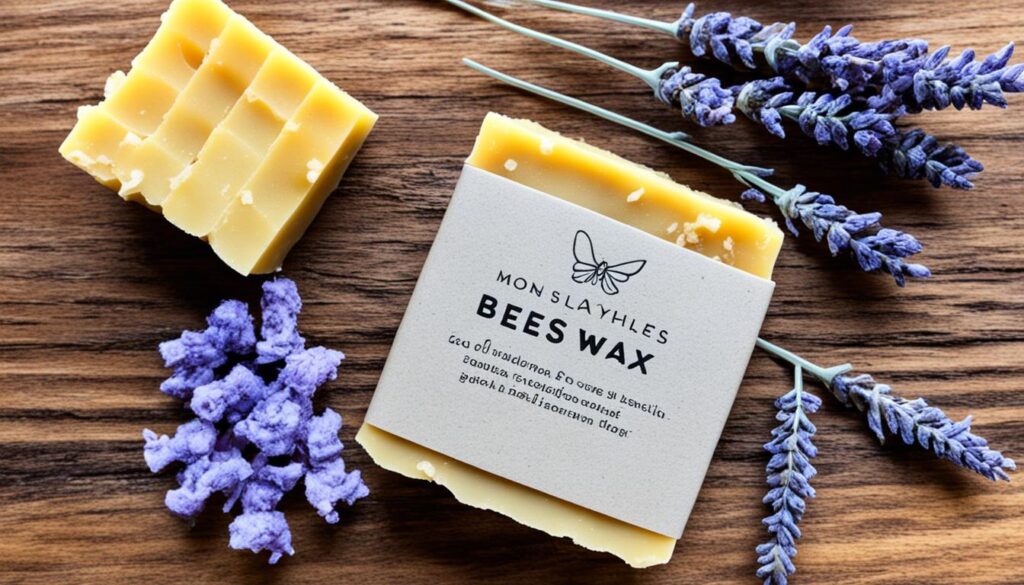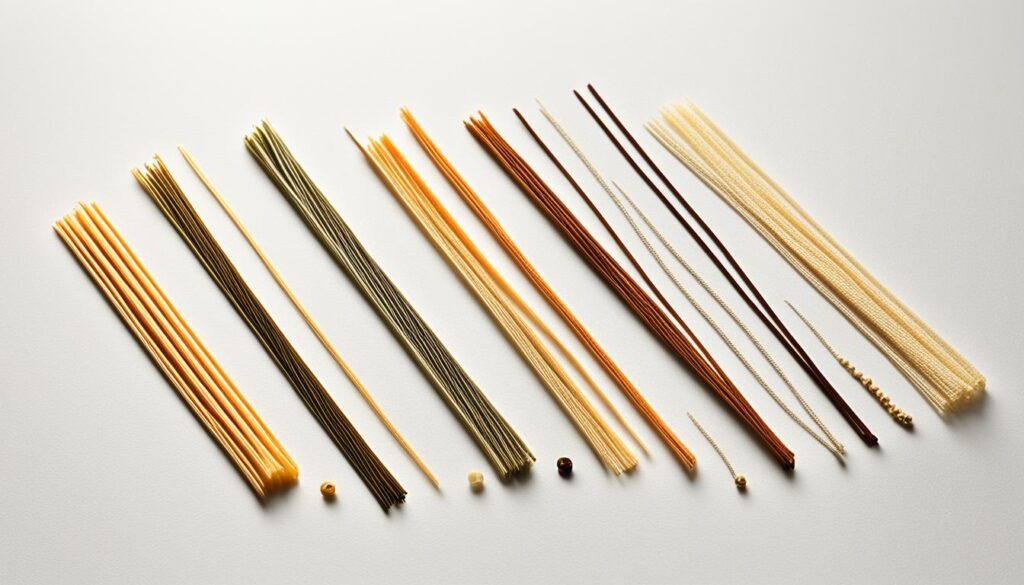How to Make Hand-Poured Candles: Tips and Techniques
Ever wondered how candle makers create those beautiful, unique candles that make any space special? The secret is in hand-pouring. Imagine making your own candles that match your style perfectly. This guide will teach you the skills to become a pro at making hand-poured candles.
Key Takeaways
- Discover the joy of creating personalized, hand-poured candles that reflect your unique style
- Learn expert tips and techniques to elevate your candle-making skills
- Understand the importance of selecting the right wax, wick, and fragrance for consistent, high-quality results
- Explore the art of scent blending and mastering the perfect pour temperature
- Unlock the secrets to curing your candles for optimal performance and longevity
Embracing Imperfection: Don’t Panic if Your First Candles Aren’t Perfect
Making hand-poured best wax for hand-poured candles is fun and rewarding. But remember, perfection takes time. Even experts started somewhere. Learning is full of valuable lessons.
As you start with hand-poured candle tips and candle making tips for beginners, enjoy the process. See any mistakes as chances to grow and get better.
The Joy of Learning Through Experience
Candle making is a journey of discovery. Each batch teaches you something new. Celebrate your progress, no matter how small.
Every pour, every scent choice, and every lesson moves you closer to mastering candle making. Approach your hand-poured candle tips with a sense of adventure and curiosity. You’ll find it very rewarding.
Perfection Takes Practice
- Consistent practice is the key to achieving your desired results.
- Don’t be discouraged if your first few candle making tips for beginners don’t turn out perfectly.
- With each batch, you’ll gain valuable insights and refine your techniques.
- Trust the process and enjoy the journey of becoming a best wax for hand-poured candles artisan.
The path to mastery is paved with patience and perseverance. Embrace imperfections and value the lessons you learn. Your hand-poured candles will improve with time and practice.
Prep Work: Cleaning Candle Containers for Pristine Results
Before starting your candle-making, make sure to prepare your candle containers right. This step is key for a professional look and to avoid “wet spots” on your jars.
To get a clean result, clean your candle jars well before adding wax. Begin by washing them with warm, soapy water. Make sure every part is clean of residue or dirt. Then, rinse the jars well and let them dry before going further.
- Wash your candle containers with warm, soapy water
- Rinse the jars thoroughly to remove any soap residue
- Allow the containers to dry completely before use
After cleaning and drying your candle molds, you’re set to pour your own candles. Preparing your containers well means a smooth candle-making process. You’ll avoid any ugly marks or flaws.
The Candle Journal: Your Secret Weapon for Consistent Success
As an aspiring candle maker, a well-kept candle journal is key. It’s your go-to guide, tracking your progress and helping you dodge mistakes. By noting down each candle-making session, you’ll learn how to improve and get better results.
Tracking Your Candle-Making Journey
Your journal should track every candle you make. Note the wax type, fragrance mix, and pour temperature. This info helps you see what makes your candles great. Over time, it turns into a treasure trove of knowledge, letting you make your best candles again and tweak your methods for better results.
Avoiding Costly Mistakes
A candle journal is great for avoiding mistakes. By looking back at your notes, you can figure out why some candles didn’t turn out right. This way, you can change your ways to avoid those issues next time, saving time and resources.
Keeping a candle making journal is a smart move. It helps you track your candle making process and fix problems. This way, you’ll find the secret to making great candles consistently and improve your skills.
Keep It Simple: Avoiding Unnecessary Additives
When making your own hand-poured candles, it’s tempting to add things like dried flowers or decorative stones. But, it’s better to resist this urge. Adding extra stuff can lead to problems that affect how well your candles burn and their safety.
Items like dried flowers or small trinkets can be dangerous if they touch the flame. They might also release harmful substances when the candle is lit. For safe and reliable candles, stick to the basic ingredients and avoid adding extra things.
The beauty of hand-poured candles comes from their simplicity and the skill put into making them. Keeping your recipes and methods simple ensures your candles are safe and look great.
“The best things in life are often the simplest. Embrace the purity of your candle-making process and let the quality of your work speak for itself.”

As you keep making candles, don’t try to make them too complicated. Use only what you need, and your candles will be safer and look better. Enjoy the simple process and let your skill show.
Wax Wisdom: Understanding the Properties of Different Waxes
As a candle enthusiast, diving into the world of waxes is key. There are over 60 types of wax for candle making, each with its own benefits and drawbacks. For hand-poured candles, we suggest using non-toxic, vegan soy wax for a smooth process.
The Benefits of Soy Wax
Soy wax is a top pick for hand-poured candles. It has a lower melting point, making pouring easy and giving a perfect finish. Plus, it burns cleanly, leaving little soot and keeping the air clean. This makes it a green choice.
The Paraffin Debate
Paraffin wax is common in candle making but has its concerns. It’s known for a strong scent throw. However, there are worries about possible health risks and breathing problems. When choosing types of candle wax, think about what matters to you and the planet.
“Exploring the world of waxes is an integral part of the candle-making journey. By understanding the unique properties of each type, you can create truly exceptional, eco-friendly hand-poured candles.”
Wick Selection: Finding the Perfect Match for Your Wax
Choosing the right wick for your hand-poured candles is key to a great burn. The type of wick, its material, and size are crucial. They make sure your candles burn well.
Exploring Wick Materials and Sizes
There are many wick materials to pick from. Wooden wicks are affordable and give a cozy crackle. Cotton wicks are great for both inside and outside, with a steady flame.
The wick size should match your candle’s size. Big candles need a strong wick for a steady flame. Small candles do better with a smaller wick to prevent a big flame.
| Wick Material | Pros | Cons |
|---|---|---|
| Wooden Wicks |
|
|
| Cotton Wicks |
|
|
Choosing the perfect wick means trying out different materials and sizes. Keep experimenting until you find the best match for your wax and candle.

“The right wick can make all the difference in the world for your hand-poured candles.”
Fragrance Harmony: Choosing Scents that Complement Your Wax
Making scented candles means finding the right mix of wax and fragrance. Some fragrance oils are strong and only need a little to smell great. Others might need more to fill the air with their scent. When picking fragrance for your candles, choose oils made for candle making for the best results.
The Art of Scent Blending
Trying out different oil amounts, pouring temperatures, and cure times helps find the best fragrance harmony for your candles. Mixing essential oils or fragrance oils can make unique scents that go well with the wax. This makes your candle making even more fun.
- Start with a base note, such as vanilla or sandalwood, to provide a foundation for your scent.
- Add middle notes like lavender or eucalyptus to add depth and complexity.
- Finish with top notes like citrus or floral to create a refreshing and balanced aroma.
The art of scent blending is all about trying new things and discovering what works. Enjoy the process and let your creativity flow. As you make scented candles, you’ll create something special that will make people happy.
“The scent of a candle can take you to another time and place, bringing back memories and feelings. Getting good at blending fragrances is key to making amazing candles.”
hand-poured candles tips: Mastering the Pour Temperature and Fragrance Ratio
Starting your candle-making journey means learning about pour temperature and fragrance ratio. These are key to making candles that look great and smell wonderful. They help your candles not just look good but also smell amazing for a long time.
When you’re pouring candle wax, timing is key. The ideal candle pour temperature depends on the wax type. Always check the guidelines from your wax supplier. Pouring at the right temperature makes sure the wax flows well into the container. This creates a smooth, even surface.
The fragrance ratio for candles is also crucial. A common guideline is to use 6-10% fragrance oil per pound of wax. But, always follow the instructions from the fragrance oil maker for the best results. Mixing the wax and fragrance gently spreads the scent evenly throughout the candle.
| Wax Type | Recommended Pour Temperature | Fragrance Ratio |
|---|---|---|
| Soy Wax | 185-195°F (85-91°C) | 6-10% per pound of wax |
| Paraffin Wax | 195-205°F (91-96°C) | 6-10% per pound of wax |
| Beeswax | 185-195°F (85-91°C) | 6-10% per pound of wax |
Mastering pouring candle wax at the best temperature and using the right fragrance ratio for candles is key. This way, you’ll make hand-poured candles that look great and smell wonderful.
“The key to creating exceptional hand-poured candles lies in understanding the nuances of pour temperature and fragrance ratio.”
The Importance of Curing: Allowing Your Candles to Reach Their Full Potential
It might be hard to wait, but let your curing hand-poured candles sit for 24-48 hours before lighting them. This candle curing process lets the fragrance fully develop. It makes the scent stronger when the candle is lit and when it’s not.
Waiting for the curing time for candles is key. The wax changes, making the scent blend well. If you don’t wait, your candles might not smell as good or burn evenly. So, it’s better to wait for the best results.
| Curing Time | Benefits |
|---|---|
| 24-48 hours |
|
| 1-2 weeks |
|
Being patient with curing hand-poured candles pays off. Giving your candles the time they need makes the burning experience much better.
Conclusion: Embracing the Journey of Candle-Making Mastery
Making hand-poured candles is a rewarding journey. It’s filled with learning, experimenting, and improving your skills. By embracing the process and tracking your progress, you’ll make unique, high-quality candles. These candles can warm up any space.
Celebrate your small wins, learn from any mistakes, and enjoy the candle making process. This journey is yours to take. Whether you’re just starting or you’re already skilled, take pride in your progress. Enjoy the satisfaction of making candles that bring joy to your home and others.
The art of candle making keeps evolving. With each candle you make, you’ll learn new techniques and find amazing scent combinations. Let your creativity flow and enjoy the magic of making candles by hand.
FAQ
What are the benefits of making hand-poured candles at home?
What should I do if my first few candles don’t turn out perfect?
How do I properly clean my candle containers before pouring?
Why is keeping a detailed candle journal important?
What should I avoid adding to my hand-poured candles?
What type of wax is best for hand-poured candles?
How do I choose the right wick for my hand-poured candles?
How do I ensure the perfect scent for my hand-poured candles?
When can I light my newly poured candles?
Source Links
- https://kalamazoocandle.com/blogs/learn-about-candles/candle-making-tips-tricks – 15 Candle Making Tips and Tricks (For Beginners)
- https://www.thehealthymaven.com/homemade-aromatherapy-candles/ – How to Make Candles at Home
- https://www.marthastewart.com/8046367/how-to-make-candles – How to Make Basic Poured Candles
- Fragrance That Wows: A Beginner’s Guide to Adding Scents to Your Homemade Candles
- best essential oils for candles
- wood wick guide
- how to make candles smell stronger
- how to ship candles
- how to fix soy wax frosting
- wick Guide how to choose the right wick size with chart
- how to make candle molds
- how to clean candle wax
- how to reuse candle jars
- soy wax candle troubleshooting
- best wax melter for candle making
- how to conduct burn test
- why candle flickering crackling smoking
- how much wax per candle
- how to make candles smell stronger
- Easy Ways to Increase the Scent Throw of Your DIY Candles
- How to Make Candles for Meditation and Relaxation
- Using Upcycled Materials in Candle Making
- How to Make Hand-Poured Candles: Tips and Techniques

Leave a Reply